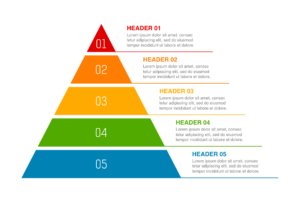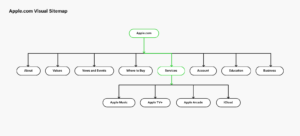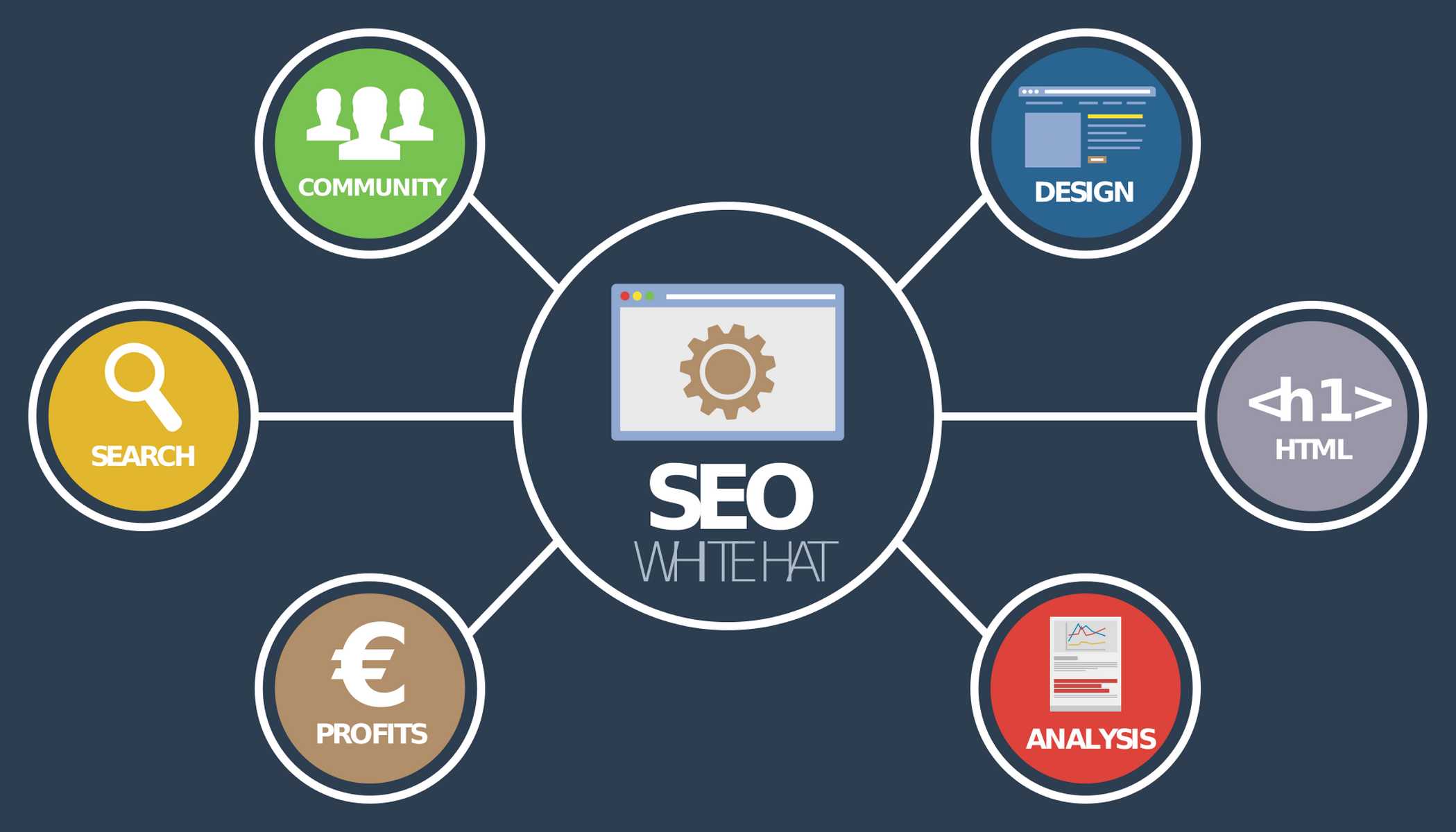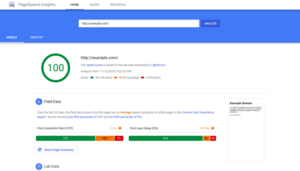Congrats! You’re getting started on your search engine optimization strategy – now you’re one step closer to transforming your e-commerce store’s online presence.
While an SEO strategy has countless benefits for your website, it can be challenging to get started. That’s why we’ve created an e-commerce SEO checklist explaining the necessary steps for optimizing your website.
Keep reading to get started.
1. Optimize Headings
The first part of your webpage that a viewer will notice – even before they click on the page – is your title.
Optimize your title for SEO by keeping it between 5 to 10 words. When appropriate, use your brand in headings, and use keywords as close to the beginning of titles as possible.
Once viewers land on the page, your title and other headings need to be optimized within your website’s design. The title of your page should be classified as H1, while subheadings should be H2.
All other headings should follow the hierarchy H3, H4, H5, and so on. Keeping your headings properly organized tells Google how to interpret the information on the page.
And with better search engine understanding comes higher rankings on relevant results pages.
You may have noticed that some websites use a full-width image banner or creative alternative to an H1 title at the top of the page. If you want to pursue this option, never hide the H1 title yourself with a plug-in or similar tool.
Doing so could damage the structure of your website’s code and reduce your SEO rankings. For this service, you should go to a professional.

2. Improve Page Load Time
As information becomes more available, attention spans are getting shorter. After just 3 seconds of waiting for your website to load, visitors are more likely to leave. A high bounce rate will tell Google that your site isn’t worth a high ranking.
Improve your page load time by ensuring your photos and videos are small file sizes. When you can, embed videos from outside sources like Youtube. Include image alt text – a description of what the image shows – on all files so viewers can understand the relevance of a picture as it’s loading.
Reduce extra plug-ins or add ons to your page. Excess clutter could be lowering your page speed.
You don’t have to give up all of your plug-ins, though – make sure that you’re using a quality hosting source. The right hosting platform makes all the difference in optimizing your website.
3. Make Your Site Mobile-Friendly
Long gone are when consumers would make an internet search from their desktop computers. Google’s website says mobile phones have become the most famous tool used for Google searches.
If your site only has a desktop-friendly version, you’ll miss out on the majority of customers who want to purchase something from the convenience of their phones.
And Google will have trouble indexing your site. News sites created after 2019 are crawled using the mobile-first indexing method. Before then, the indexing was predominantly based on a website’s structure for a desktop screen.
This means that Google’s crawlers will use smartphone agents when they first explore your website. Without a mobile-friendly version, you may miss out on being registered in the search engine at all.
While a mobile-responsive site isn’t required, Google makes a special point on its website to have a mobile version of your page for an optimized experience.

4. Share Valuable Content
SEO has typically focused on creating authoritative and educational content for websites to meet Google’s definition of quality content.
However, a recent interview with Google’s John Mueller explains that quality content means so much more than that.
Valuable content encompasses everything from the text of a blog post to its presentation. This means that your blog both should give readers valuable information that they can’t find elsewhere and be presented in a user-friendly manner.
Mueller explains that the idea that many SEO experts have described in the past doesn’t fully see the point.
Well-crafted text is important, but it won’t be enough to outweigh a poorly designed website with low-quality images and a confusing layout.
For the best SEO results, put yourself in a viewer’s mind and try to take in content as a holistic experience. Ask yourself the following questions.
- Is the information I’m reading useful?
- Is it written well?
- Is it visually appealing?
- Do accompanying multimedia enhance the experience?
- Is everything loading properly?
You’ll need to answer a confident “yes” to these questions to classify your website as a source of high-quality content.

5. Use Anchor Text for Link-building
One important element of valuable content is giving more information to your readers. You do this by including links in your post that provide context and further education on a subject.
To link text in your page to another, you’ll have to use what is called anchor text. You can usually recognize anchor text because it’s blue and underlined.
Internal links take the viewer to another webpage on your site.
They’re great for encouraging further action, like signing up for an email list or requesting a demo. If you’ve covered a topic in-depth and it’s relevant to a new blog post, an internal link will give the reader additional background.
External links take the viewer outside of your website.
They’re great for backing up your claims with data, recommending a product you think your viewers would like and providing another opinion on an issue.
Both links are valuable for your search engine optimization strategy because they give your site credibility as a legitimate source of knowledge.
6. Create a Sitemap
Once you add all of your internal and external links to your website, Google’s bots may need some assistance finding all of them. A website with a few static pages and a dedicated blog could have 1000 links.
Google’s crawlers work by finding and indexing pages that have other pages pointing to them. If a page in your website has no other links to serve as a reference, it could get buried in Google’s infinite plethora of unindexable content.
An XML sitemap tells Google where to find the most important pages on your site, just like a map tells you how to get from point A to point B.
Having a sitemap ensures that Google will crawl and index the information that you want customers to see first.

7. Add Canonical Tags to Duplicate Pages
Sometimes your web pages will have multiple versions. When this happens, it’s best to create a canonical tag to each page so that you’re not penalized for having copies of your information elsewhere.
A canonical tag is an HTML element that tells Google which form of the page should be the primary location for visitors if both versions were to appear in the search results.
You’ll end up with the canonical page and the duplicate page. As its name suggests, the canonical page will be the one that Google has been instructed to prioritize.
Adding canonical tags is a simple process that can do wonders for your SEO by taking the guesswork out of Google’s indexing process.

8. Form Rich Snippets with Structured Data
Structured data is a more advanced search engine optimization skill, but it’s now becoming necessary for more competitive industries.
Structured data, a subset of which is schema markup, involves the creation of rich snippets to give Google a better understanding of what your data means.
For instance, say your website includes a string of numbers on one of its pages. Google can recognize the numbers, but won’t be able to implicitly understand what they mean.
To Google, 1234 could be the beginning of an address, the last four digits of a telephone number, or even an item listing without schema markup. The markup will tell Google that 1234 is, in fact, part of your business’s address.
Your SEO will improve as a result, because viewers who type in a search looking for your business address will be shown these numbers as a relevant result. They’ll reach the answer to their question more quickly and efficiently.
Schema markup is also great for driving traffic to your website by creating rich snippets. If you’ve ever seen a picture or a rating listed next to a URL on the search results page, you’ve just viewed a rich snippet.
Rich snippets make websites more personal to viewers who are scrolling through a list of unfamiliar links. Seeing that a company’s overall rating is 4.8 stars without having clicked on the website yet is a comforting sign to a potential lead.

Increase Website Traffic with an E-commerce SEO Checklist
Boost your e-commerce store’s search engine rankings and draw in new customers by following our e-commerce SEO checklist.
Contact us or sign up for our email list for more information on SEO strategy and search engine marketing. You’ll be able to download a free e-commerce SEO checklist, so sign up today.





